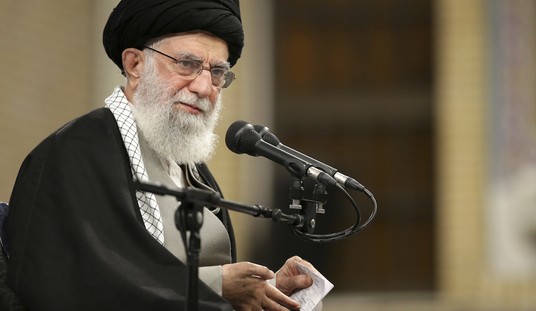Who could have guessed that the most enjoyable news story of the decade would materialize within the first five weeks of 2020?
Each new iteration of incompetence feels like a thick new patch of grass to run barefoot through. I frolic in their shame. And in the joy of knowing that we as a people really are done with caucuses, and with Iowa, after this disaster.
I feel like this can only end now with the Iowa Democratic Party admitting that they can’t stand by whichever outcome they finally arrive at. There’s just too much uncertainty about how the votes were counted and the delegates calculated to give them confidence that they got it right. The 2020 Democratic result in Iowa will pass into history as an unsolved mystery, like where Jimmy Hoffa is buried. There are theories about the truth, but we must make peace with the hard reality that we’ll never know.
I mean, really:
BREAKING: The Associated Press is unable to declare a winner of Iowa’s Democratic caucuses because of irregularities in this year's process and the tight margin between Pete Buttigieg and Bernie Sanders. https://t.co/FX25oUDFaV
— AP Politics (@AP_Politics) February 6, 2020
Nate Cohn’s NYT outfit, The Upshot, published the bombshell story this morning that there are lots of basic errors in the precinct data published by the Iowa Democratic Party. You should read that post now, and read it all the way through because the stuff at the end about Bernie Sanders closing in on Pete Buttigieg thanks to “satellite caucuses” is crucial to understanding Cohn’s latest critique. Buttigieg led Sanders by two full points in delegates on Wednesday, when the IDP released partial results, but Bernie has since closed the gap thanks to a huge advantage in those “satellite caucuses” — one of which has yet to be tabulated. The delegate margin between them is whisper-thin at the moment, with Sanders poised to nose into the lead after that last satellite is counted.
There’s just one wrinkle, says Cohn. Iowa Democrats appear to be calculating the delegate numbers from the satellite caucuses incorrectly per their own rulebook.
You should read his piece in full to see why, as it’s complicated. (One can’t fault Iowa Dems for being confused by the rulebook. One can fault whoever wrote and adopted the rulebook.) It comes down to ambiguity over how “state delegate equivalents” are to be awarded proportionally between the various satellite caucuses. The Iowa Democratic Party appears to be doing it by looking at raw turnout. If 1,000 people show at one caucus and 10 people show at another, the first caucus gets 100 times the “state delegate equivalents” as the second. Pretty straightforward, as naturally you’d want to reward a candidate for winning among a larger number of people. However, the rulebook appears to tie the “state delegate equivalents” at each caucus to a corresponding number of “county delegate equivalents.” (See how this is confusing?) And here’s the important part: County delegate equivalents are capped. So, as Cohn says:
[W]hile the number of county convention delegates at each satellite caucus is based on the turnout, it is not directly proportionate. For instance, a satellite precinct with 1 to 20 people gets four delegates, while a caucus with 21 to 40 caucusgoers gets five delegates. Most important, it limits the influence of any one precinct: A caucus can’t get more than nine county delegates, regardless of how many caucusgoers attend.
Under this framework, the caucus with 10 people in my previous example gets four “county delegate equivalents.” The caucus with 1,000 people gets … nine. Little different from that 100-to-one ratio we imagined.
Cohn crunched the numbers and determined that using the two different systems of calculations with the numbers available for Sanders and Buttigieg would produce only a tiny discrepancy between the results. That’s the good news for Dems. The bad news? The current gap in “state delegate equivalents” between Sanders and Buttigieg is even tinier. Buttigieg currently leads by 3.42; weighing the satellite caucuses the way the IDP has been doing produces a net gain for Bernie of 3.8, pushing him ever so slightly into the lead.
So yes, technically, the ambiguity in this rule matters a lot if we want to know who “won” (i.e. won the most delegates) in Iowa. How could it be otherwise in this caucus of the damned? Of course this clusterfark had to get worse somehow. Of course Bernie’s or Pete’s vote shares couldn’t be one or two points different in either direction, mooting this entire problem.
A nervous, sweaty Tom Perez called for a recanvassing earlier today, which would involve rechecking the math on all 1,756 precinct work sheets. Honestly, bro, at this point I feel like that would be tantamount to reading from the Necronomicon. It might open a portal to another dimension in which all rules of math and logic no longer apply. The best play right now is to declare Bernie the winner on raw votes and a de facto tie between him and Pete on delegates, which is how this will shake out in practice even if Cohn invents a new branch of statistics that can finally tell us the actual results from Iowa.
In lieu of an exit question, and in keeping with the spirit of amusement of this post, go read Jonathan Chait warning his fellow centrist liberals that it’s officially time to panic over the state of the Democratic race. I wrote a post myself making a similar point before I saw his, that we seem very much headed towards a Bernie/Buttigieg/Bloomberg race next month that does *not* look promising for moderates. That post will be available to VIP readers later this evening.








Join the conversation as a VIP Member